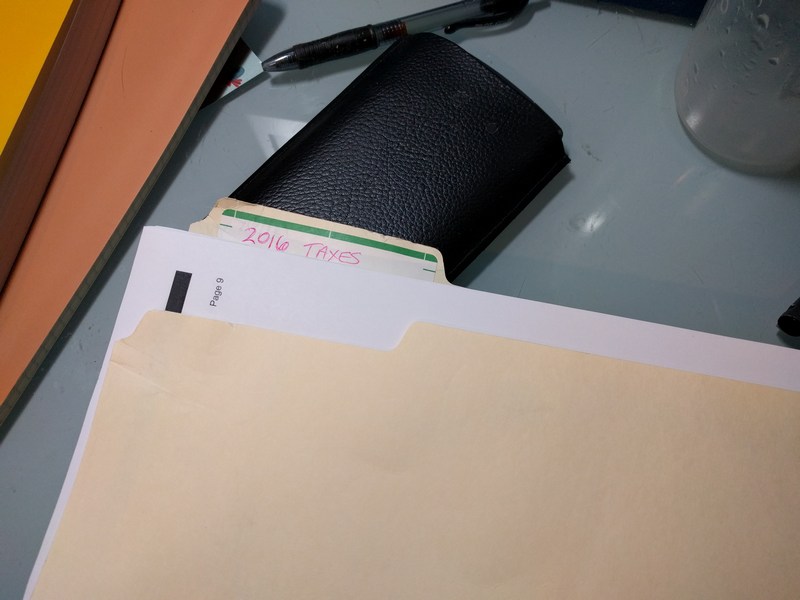You’re a freelancer. That means you work hard for the money (doo doot, doo doot), but it also means that you have to deal with things like bookkeeping and record keeping. Ideally, you have one of those 3-column ledgers, or QuickBooks, or something and you enter each expense and payment daily. But… if you don’t, here is how to handle record keeping for freelancer taxes for the rest of us.
The Big File Folder
Alright, let’s be honest. You don’t really need those records 90 percent of the time. In fact, if you don’t need a refund, or have a disagreement with a client, you never really need to know that you spent $14.98 on a box of printer paper at Costco on March 28th. But, eventually, you’ll want to deduct that as a business expense on your freelance writer taxes.
The Big File Folder method is exactly what it sounds like. You create a file folder that says Taxes 2017 on the top of it, and you put it in an easily accessible place. “Easily accessible,” means right near your desk where you handle your mail and records, not in the big filing cabinet in the closet. That’s a recipe for losing documents that you set out to “file later.” (Trust me. I know all about slacking on record keeping.)
Every time you get a check, or a bill, or a receipt, put it into the folder. Don’t bother sorting it, and don’t put too much thought into whether or not it is a record you actually will need. For the entire year, error on the side of keeping too much. You can start shredding things next March when you fire up TurboTax and really start looking at what you do, or do not, need.
There are some exceptions that you can’t just big file folder. The biggest one is mileage. Chances are you won’t get a receipt for every mile you drive, so if you drive for business and you want to take the IRS mileage deduction, you need to keep “contemporaneous records.” That means you write down where you drive, when, and how many miles, as you do it. For that, you’ll need a separate log, or one of the many mileage tracking apps available.
Money spent parking at meters is another thing you’ll have to keep track of by hand since most street side parking meters don’t print out receipts.
When it comes time to do your taxes, simply pull out the big file folder and go through it piece by piece as you do your taxes. If you are using TurboTax Home & Business for freelance writer taxes, then you can follow along with Turbo Tax questions and flip through looking for each piece of paper you have. As you go, move the “used” documents into another file folder. When you have finished going through the program, you can go through your unused documents to make sure you didn’t miss any tax deductions that you deserve.
After your taxes are filed, print a hard copy, put it in the file with all your documentation and stick it someplace safe, like a filing cabinet. After 3 years, you can shred it all. On the off chance that you get audited, you’ll need to do some sorting, and getting things in order, but considering the chance of an audit is small (and getting smaller with every budget cut), it’s probably worth saving yourself the hassle of getting it all audit-ready ahead of time.
As an added bonus, if something comes up, even months later, you’ll know right where the documents are, even if you have to sort your way through a messy file folder to find them.
The All Electronic
It’s possible to handle your tax bookkeeping electronically. I know one guy who has an Excel spreadsheet in which he documents each expense, along with a brief explanation like, “Paper for printer,” or “New Filing Cabinet for Story Ideas.” The idea is that if he is ever audited, he has a document with the business reason for every cent spent. Then, each receipt is imaged by date. There are complicated scanners with text recognition and self-filing, but he just snaps a photo with his phone.
The idea is that you can use the spreadsheet to find any expense, and if anyone wants proof, you just need to look up the few receipts from that date.
Obviously, this method requires more setup, and the willingness to log everything as you go through the year. If you do this route, be sure that you use it regularly. There is no better way to lose important things than to have half of them in a meticulously organized electronic system, and half of them in a box over in the corner.
Whatever method you use, remember to error on the side of more record keeping. You can always shred documents later, but you can’t get them back from the trash if it turns out you need them.
